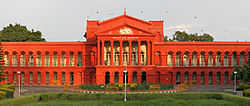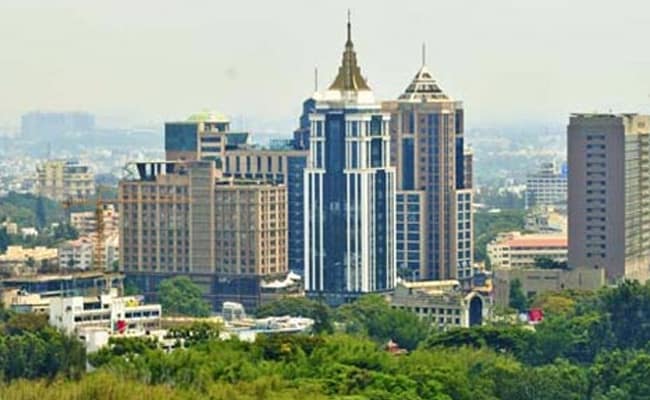The city's history dates back to around 890 AD, in a stone inscription found at the Nageshwara Temple in Begur, Bangalore. The Begur inscription is written in Halegannada (ancient Kannada), mentions 'Bengaluru Kalaga' (battle of Bengaluru). It was a significant turning point in the history of Bangalore as it bears the earliest reference to the name 'Bengaluru'.In 1537 CE, Kempé Gowdā – a feudal ruler under the Vijayanagara Empire – established a mud fort considered to be the foundation of modern Bengaluru and its oldest areas, or petes, which exist to the present day. After the fall of Vijayanagar empire in 16th century, the Mughals sold Bangalore to Chikkadevaraja Wodeyar (1673–1704), the then ruler of the Kingdom of Mysore for three lakh rupees.When Haider Ali seized control of the Kingdom of Mysore, the administration of Bangalore passed into his hands. It was captured by the British East India Company after victory in the Fourth Anglo-Mysore War (1799), who returned administrative control of the city to the Maharaja of Mysore. The old city developed in the dominions of the Maharaja of Mysore and was made capital of the Princely State of Mysore, which existed as a nominally sovereign entity of the British Raj. In 1809, the British shifted their cantonment to Bangalore, outside the old city, and a town grew up around it, which was governed as part of British India. Following India's independence in 1947, Bangalore became the capital of Mysore State, and remained capital when the new Indian state of Karnataka was formed in 1956. The two urban settlements of Bangalore – city and cantonment – which had developed as independent entities merged into a single urban centre in 1949. The existing Kannada name, Bengalūru, was declared the official name of the city in 2006.
Bangalore is widely regarded as the "Silicon Valley of India" (or "IT capital of India") because of its role as the nation's leading information technology (IT) exporter.Indian technological organisations such as ISRO, Infosys, Wipro and HAL are headquartered in the city. A demographically diverse city, Bangalore is the second fastest-growing major metropolis in India. Recent estimates of the metro economy of its urban area have ranked Bangalore either the fourth or fifth-most productive metro area of India. It is home to many educational and research institutions in India, such as Indian Institute of Science (IISc), Indian Institute of Management (Bangalore) (IIMB), International Institute of Information Technology, Bangalore (IIITB), National Institute of Fashion Technology, Bangalore, National Institute of Design, Bangalore (NID R&D Campus), National Law School of India University (NLSIU) and National Institute of Mental Health and Neurosciences (NIMHANS). Numerous state-owned aerospace and defence organisations, such as Bharat Electronics, Hindustan Aeronautics and National Aerospace Laboratories are located in the city. The city also houses the Kannada film industry.
A discovery of Stone Age artefacts during the 2001 census of India at Jalahalli, Sidhapura and Jadigenahalli, all of which are located on Bangalore's outskirts today, suggest probable human settlement around 4,000 BCE.Around 1,000 BCE (Iron Age), burial grounds were established at Koramangala and Chikkajala on the outskirts of Bangalore. Coins of the Roman emperors Augustus, Tiberius, and Claudius found at Yeswanthpur and HAL indicate that the region was involved in trans-oceanic trade with the Romans and other civilizations in 27 BCE.
The region of modern-day Bangalore was part of several successive South Indian kingdoms. Between the fourth and the tenth centuries, the Bangalore region was ruled by the Western Ganga Dynasty of Karnataka, the first dynasty to set up effective control over the region. According to Edgar Thurston. there were twenty-eight kings who ruled Gangavadi from the start of the Christian era until its conquest by the Cholas. These kings belonged to two distinct dynasties: the earlier line of the Solar race which had a succession of seven kings of the Ratti or Reddi tribe, and the later line of the Ganga race. The Western Gangas ruled the region initially as a sovereign power (350–550), and later as feudatories of the Chalukyas of Badami, followed by the Rashtrakutas until the tenth century.The Begur Nageshwara Temple was commissioned around 860, during the reign of the Western Ganga King Ereganga Nitimarga I and extended by his successor Nitimarga II.Around 1004, during the reign of Raja Raja Chola I, the Cholas defeated the Western Gangas under the command of the crown prince Rajendra Chola I, and captured Bangalore.During this period, the Bangalore region witnessed the migration of many groups — warriors, administrators, traders, artisans, pastorals, cultivators, and religious personnel from Tamil Nadu and other Kannada speaking regions.The Chokkanathaswamy temple at Domlur, the Aigandapura complex near Hesaraghatta, Mukthi Natheshwara Temple at Binnamangala, Choleshwara Temple at Begur, Someshwara Temple at Madiwala, date from the Chola era.





Post a Comment